How Long Do Cats Live?
There is no doubt that cats are beloved members of many families. But just how long do cats live, on average? And what are the main factors that influence a cat’s lifespan? This post will answer those questions and more. By understanding some of the key things that influence a cat’s life expectancy, you can make sure you’re doing everything possible to help your feline friend live a long and healthy life.
There are a lot of reasons to love cats, but one of the best is that they’re so darn cute. In fact, there’s a scientific reason for why cats are cuter than other animals: their features are more baby-like. Researchers have found that when people look at pictures of baby animals, their brains release oxytocin, which is also associated with happiness and love. So if you’re looking for a cuddly companion who will make you feel good every time you look at her, a cat is definitely the right pet for you!
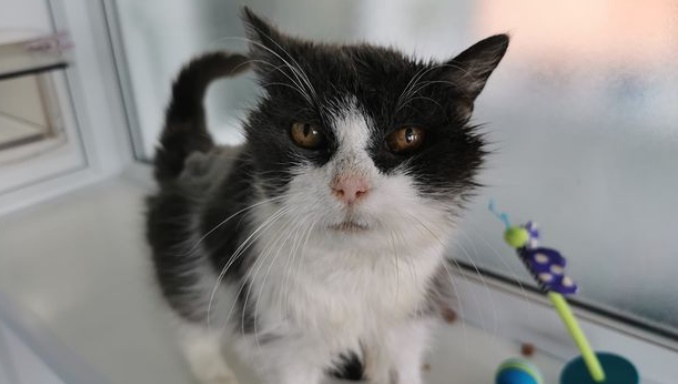
But just how long do cats live? The answer to that question depends on a number of factors, including breed, lifestyle, and health. And besides, just like humans, there are cat breeds that have a longer life expectancy than others. In the section below, I will give you life expectancy data for some common cat species and how to convert cat age to human age, so you can know exactly how old your kitty is in people years.
In order to keep your cat healthy and help you make informed decisions about their care, it is important to understand how to calculate their age. While there is no one definitive answer to this question, this guide will provide a basic overview of how to estimate your cat’s age. By understanding the different stages of a cat’s life, you can better identify potential health risks and ensure that you are providing your pet with the best possible care.
See more: How Long Do Bengal Cats Live? Things To Know
How Long Do Cats Live?
The average lifespan of a cat is about 15 years, although this number can vary widely depending on the breed and individual health. For example, Siamese cats tend to live longer than other breeds, with an average lifespan of 20 years. On the other hand, some shorter-lived breeds, such as the Devon Rex, only have an average lifespan of 10 years.
Of course, the life expectancy of a particular cat also depends on individual factors, such as lifestyle and health. For example, indoor cats tend to live longer than outdoor cats, because they are less likely to be exposed to dangers like cars or other animals. Similarly, cats who are well-cared for and have regular vet check-ups are also more likely to have a longer lifespan.
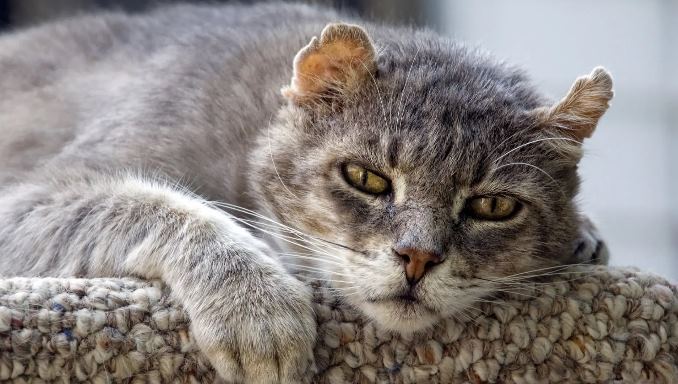
Factors That Influence a Cat’s Lifespan
There are a number of factors that can influence a cat’s lifespan, including:
Breed: As mentioned above, some cat breeds tend to live longer than others. For example, Siamese cats have an average lifespan of 20 years, while Devon Rex cats only have an average lifespan of 10 years. The average life expectancy of popular cat breeds:
- Siamese: 15-20 years
- Persian: 10-12 years
- Sphynx: 10-15 years
- Manx: 10-12 years
- Birman: 11-13 years
- Russian Blue: 11-14 years
While there are many factors that affect a cat’s lifespan, such as diet and environment, breed can also play a role. Some popular cat breeds tend to have shorter lifespans than others. Siamese cats, for example, typically live 14-20 years, while Persians usually only live 10-12 years. Sphynx cats are one of the longest-lived breeds, with an average lifespan of 10-15 years. Manx and Birman cats also tend to have relatively long lifespans, at 11-13 and 11-14 years respectively. Russian Blue cats are another long-lived breed, with an average lifespan of 11-14 years.
While all cats require proper care and nutrition to live long and healthy lives, some breeds are hardier than others and can tolerate less-than-ideal conditions better. If you’re looking for a cat that will have a long life, consider one of the breeds above. With proper care, any of these cats can give you years of companionship.
Lifestyle: Indoor cats tend to live longer than outdoor cats, because they are less likely to be exposed to dangers like cars or other animals. Similarly, cats who are well-cared for and have regular vet check-ups are also more likely to have a longer lifespan. There are a few things that you can do to help your cat live a long, healthy life.
- One important factor is choosing the right diet for your feline friend. Talk to your veterinarian about which food is best for your cat, and be sure to provide plenty of fresh water.
- Another crucial element in ensuring a long life for your cat is exercise. Regular playtime and exploration will help keep your cat’s body and mind healthy. Be sure to provide plenty of toys and a safe place to roam, both inside and outside your home.
- Finally, regular vet check-ups are important for catching any potential health problems early on. Make sure to schedule an appointment at least once a year, and more often if your cat is elderly or has any underlying health conditions. By following these simple tips, you can help your beloved cat enjoy a long and happy life.
Health: Cats who are healthy and have no underlying health conditions tend to live longer than those who do not. For example, obese cats are more likely to develop health problems like diabetes, which can shorten their lifespan.
- There is a lot of debate over how much of an impact diet has on health, but there is no doubt that what a cat eats can affect its health. For example, a cat who eat a lot of fatty foods may be more prone to obesity and diabetes, while a cat who eat a lot of processed foods may be more prone to liver disease. A healthy diet for a cat includes plenty of fresh, whole foods like fruits, vegetables, and lean protein. Cats also need access to clean water at all times.
- In addition to diet, exercise is also important for a cat’s health. A sedentary lifestyle can lead to obesity and other health problems, so it’s important to make sure your cat gets plenty of exercise. Cats can get exercise by playing with toys, climbing trees or scratching posts, and going for walks on a leash.
- Overall, the health of a cat depends on many factors, including diet, exercise, and genetics. However, by taking care of your cat and providing it with a healthy lifestyle, you can help ensure that it enjoys a long and happy life.
See more: How Long Can a Kitten Go Without Eating?
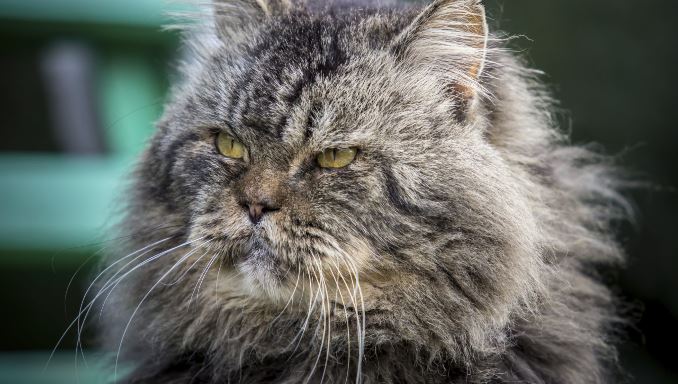
Top Causes of Death for Cats
Cancer is the leading cause of death in cats, followed by liver disease, kidney disease, and feline infectious peritonitis. Heart disease, diabetes, and respiratory disease are also common causes of death in cats.
Cancer
Cancer is the leading cause of death in cats, accounting for approximately one-third of all feline deaths. There are many different types of cancer that can affect cats, with the most common being lymphoma, which starts in the cells of the immune system, and adenocarcinoma, which starts in the cells lining the stomach. Other common types of cancer include intestinal cancer, skin cancer, and breast cancer.
Liver Disease
Liver disease is the second leading cause of death in cats, accounting for approximately 10% of all feline deaths. The most common type of liver disease in cats is chronic hepatitis, which is an inflammation of the liver that can lead to scarring and cirrhosis. Liver disease can be caused by a number of different factors, including infections, cancer, and autoimmune disease.
Kidney Disease
Kidney disease is the third leading cause of death in cats, accounting for approximately 8% of all feline deaths. Kidney disease can be caused by a number of different factors, including infection, inflammation, cancer, and kidney stones. The most common type of kidney disease in cats is chronic renal failure, which is a gradual decline in kidney function that eventually leads to complete kidney failure.
Feline Infectious Peritonitis
Feline infectious peritonitis (FIP) is a virus that affects cats and can be fatal. FIP is most commonly seen in young, immunocompromised cats, and is typically spread through contact with infected bodily fluids. Symptoms of FIP include fever, weight loss, lethargy, and abdominal pain. There is no cure for FIP, and treatment is typically focused on managing symptoms and providing supportive care.
Heart Disease
Heart disease is a common cause of death in cats, accounting for approximately 5% of all feline deaths. The most common type of heart disease in cats is cardiomyopathy, which is a condition that causes the heart muscle to weaken and eventually fail. Heart disease can be caused by a number of different factors, including genetics, infection, and high blood pressure.
Diabetes
Diabetes is a common cause of death in cats, accounting for approximately 4% of all feline deaths. Diabetes is a condition that occurs when the body is unable to properly regulate blood sugar levels. diabetes can be caused by a number of different factors, including genetics, obesity, and pancreatitis. Treatment for diabetes typically involves insulin therapy and close monitoring of blood sugar levels.
Respiratory Disease
Respiratory disease is a common cause of death in cats, accounting for approximately 3% of all feline deaths. Respiratory disease can be caused by a number of different factors, including infection, allergies, and cancer. The most common type of respiratory disease in cats is bronchitis, which is an inflammation of the airways that can lead to difficulty breathing. Treatment for respiratory disease typically involves the use of antibiotics and bronchodilators.
While cancer, liver disease, kidney disease, and FIP are the leading causes of death in cats, there are many other conditions that can cause a cat to die. Some of the other common causes of death in cats include gastrointestinal disease, infection, and trauma. It is important to take your cat to the veterinarian regularly for checkups and to keep up with vaccinations to help prevent some of these conditions.
How to Convert Cat Years to Human Years
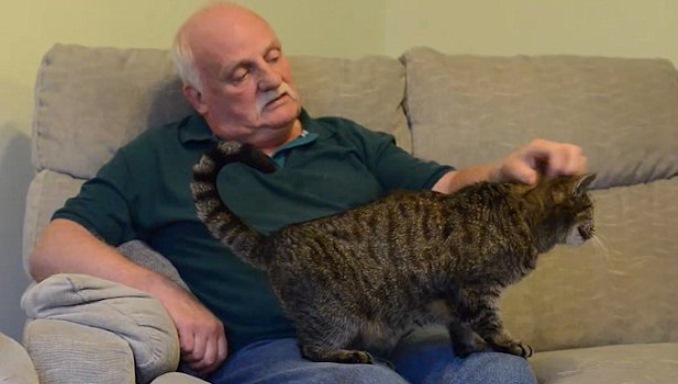
One common question people have about cats is how to convert their age into human years. The answer to this question is not as simple as it might seem, because cats age at a different rate than humans do. In general, cats reach maturity faster than humans, and they also have a shorter life expectancy. For example, a one-year-old cat is roughly the equivalent of a 15-year-old human, while a two-year-old cat is like a 24-year-old human.
To get a more accurate estimate of your cat’s age in human years, you can use the following formula:
human_age = 16 + (cat_age – 2) * 4
So, for example, a four-year-old cat would be the equivalent of a 32-year-old human.
This formula is only a general estimate, however, and your cat’s actual age in human years may be different depending on individual factors like breed, lifestyle, and health. If you’re curious about how old your cat is in human years, the best thing to do is ask your veterinarian for a professional opinion.
What Are the Different Stages of a Cat’s Life?
Like humans, cats go through different stages of life, from kittenhood to adulthood to old age. Each stage has its own distinct characteristics and challenges, and it is important to be aware of these so you can better care for your cat. Below is a brief overview of the different stages of a cat’s life:
- Kittenhood (0-6 months): Kittens are playful and full of energy, but they are also vulnerable and need a lot of care. During this stage, it is important to provide your kitten with proper nutrition, socialization, and vaccinations.
- Adolescence (6-12 months): During adolescence, cats can be more independent and may start to roam. They may also become more aggressive or territorial. It is important to spay or neuter your cat during this stage to help prevent these behavior problems.
- Adulthood (1-7 years): Adult cats are typically less active than kittens or adolescents, but they still need plenty of exercise and stimulation. This is also the stage when most health problems develop, so it is important to take your cat for regular vet check-ups.
- Old age (7+ years): Older cats are more prone to health problems, and they may start to slow down or become less active. It is important to provide your older cat with plenty of love and attention, as well as a diet that is tailored to their needs.
No matter what stage of life your cat is in, it is important to provide them with the care and attention they need to stay happy and healthy. If you have any questions or concerns about your cat’s health, be sure to talk to your veterinarian.
How Can I Tell if My Cat Is Getting Older?
As your cat gets older, they may start to experience some changes in their physical appearance and behavior. Here are some common signs that your cat is getting older:
1. They may start to lose weight or muscle mass.
2. Their fur may become thinner and grayer.
3. They may sleep more often and have less energy.
4. They may become more irritable and vocalize more often.
5. They may have a decrease in appetite or change in eating habits.
6. Their eyesight and hearing may start to decline.
7. They may start to experience changes in bathroom habits, such as urinating more often or having accidents outside of the litter box.
8. Their joints may become stiffer and they may have trouble jumping or climbing like they used to.
There are a number of changes you may notice in your cat as they start to get older. These can include physical changes like graying fur, weight loss, and reduced activity levels. You may also notice changes in your cat’s behavior, such as increased sleeping, decreased appetite, and increased irritability.
If you notice any of these changes in your cat, it’s important to take them to the vet for a check-up to rule out any underlying health conditions that could be causing these changes. Once your vet has determined that your cat is simply getting older, they can help you make any necessary lifestyle changes to help them age comfortably and gracefully.
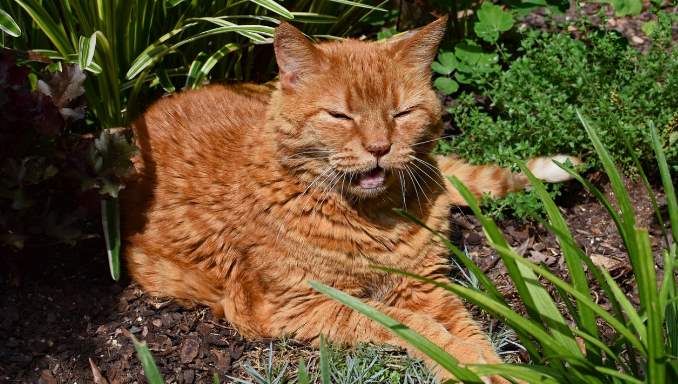
Most Common Health Problems in Older Cats
Cats are susceptible to many of the same health problems as humans, but they often mask their symptoms until the condition is quite advanced. As your cat ages, it’s important to be aware of the most common health problems so you can catch them early and get treatment for your feline friend.
One of the most common health problems in older cats is renal failure. This occurs when the kidneys are no longer able to filter toxins from the blood and they build up in the body. Symptoms of renal failure include increased thirst and urination, weight loss, lethargy, and vomiting. If your cat shows any of these signs, it’s important to take them to the vet for testing and treatment as soon as possible.
Another common health problem in older cats is arthritis. Just like in humans, arthritis is a degenerative disease that causes pain and stiffness in the joints. It’s often worse in the morning, after your cat has been lying down all night. If you notice your cat having difficulty climbing or jumping, or if they seem to be in pain when touched, it’s time for a visit to the vet.
Finally, cancer is also a leading cause of death in older cats. Unfortunately, many types of cancer cannot be cured and will eventually lead to death. However, if you catch it early enough, some types of cancer can be treated successfully. The best way to detect cancer in your cat is to take them for regular checkups and blood work so that any changes can be detected early.
By being aware of the most common health problems in older cats, you can catch them early and get treatment for your feline friend. Regular vet visits are important for all cats, but they are especially critical for older cats who are more likely to develop these serious health conditions. If you have any concerns about your cat’s health, don’t hesitate to contact your veterinarian.
What Can I Do to Help My Older Cat?
There are many things you can do to help your older cat live a long, healthy, and happy life. Here are a few suggestions:
1. Schedule regular wellness visits with your veterinarian. Older cats need to see the vet more frequently than younger ones, for both check-ups and preventive care. Your vet can catch potential problems early and help keep your cat feeling her best.
2. Keep up with vaccinations and parasite prevention. These are important for all cats, but especially older ones whose immune systems may not be as strong as they once were.
3. Feed a high-quality diet formulated for senior cats. Older cats often need more calories and protein than younger ones, and they may also require special nutrients for joint health or other age-related issues.
4. Keep your cat active and engaged. Regular exercise is important for all cats, but it’s especially vital for seniors. Play with your cat every day, and consider investing in some fun toys or puzzles to keep her mind sharp.
5. Make sure your cat has a comfortable place to rest and relax. An older cat may prefer a soft bed or perch, and she may need easy access to her litter box and food bowl.
6. Be attentive to changes in your cat’s behavior or appearance. If you notice anything out of the ordinary, don’t hesitate to contact your vet for advice.
By following these simple tips, you can help your older cat enjoy a long, happy, and healthy life.
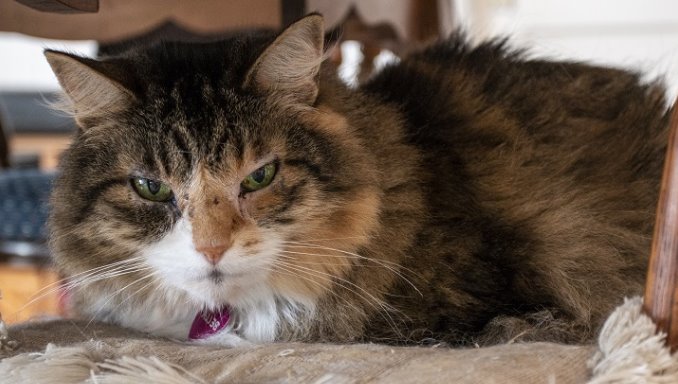
Does Your Cat Need Life Insurance?
Cat life insurance policies are designed to provide financial protection for cat owners during their pet’s death. The death benefit can be used to cover the cost of burial or cremation and any outstanding medical bills. Some policies also offer coverage for lost or stolen cats. Cat life insurance is a policy that helps cover the costs of your cat’s medical care in the event of an accident or illness. It can also help ease the financial burden on your family if your cat unexpectedly passes away.
You may be wondering if you need to get life insurance for your cat. The answer to this question depends on a number of factors, including your cat’s age, health, and lifestyle. If your cat is young and healthy, they likely don’t need life insurance. However, if your cat is older or has health problems, life insurance can help cover the costs of their medical care. Life insurance for cats typically costs between $5 and $20 per month, depending on the coverage you choose.
How Can I Get the Best Deal on Cat Insurance?
There are a variety of cat life insurance policies available, so it’s important to compare options and find one that best suits your needs. You’ll also want to consider how much coverage you want and whether you want a policy that covers your cat for its entire life or just for a specific period of time.
Some things to keep in mind when shopping for cat life insurance:
– Make sure the policy covers accidents and illnesses.
– Consider how much coverage you need.
– Compare deductibles and premiums.
– Read the fine print carefully to understand what is and isn’t covered.
If you have any questions about cat life insurance, be sure to ask your veterinarian or an insurance agent. They can help you choose the right policy for your needs and budget.
There are a few things you can do to get the best deal on cat insurance. First, make sure to shop around and compare rates from different insurers. You should also consider bundling your cat’s insurance with your own life insurance policy to get a discount. Finally, make sure to read the fine print of any policy you’re considering so you know exactly what it covers and doesn’t cover.
FAQs
How long do cats live indoors?
The average lifespan of an indoor cat is 12-18 years. However, some cats live much longer than this, with the oldest recorded age being 29 years old. The key to a long and healthy life for your indoor cat is providing them with good nutrition, plenty of exercise and mental stimulation, and regular veterinary check-ups.
How long do tabby cats live?
The average lifespan of a tabby cat is about 15 years, but some can live much longer. One study found that one in four cats lives to be at least 20 years old, and there are even reports of tabby cats reaching 30 years or more. So, if you’re lucky enough to have a tabby cat as a pet, you can expect them to be a part of your life for many years to come.
How long do outdoor cats live?
Outdoor cats typically have shorter lifespans than indoor cats. A variety of factors can contribute to this, including exposure to predators, weather, and diseases. Lack of regular veterinary care can also shorten a cat’s lifespan. Outdoor cats usually live between two and five years, while indoor cats can live up to 20 years or more.
How long can a cat live on subcutaneous fluids?
Subcutaneous fluids are commonly used to provide hydration and nutrients to cats who are unable to eat or drink on their own. The length of time that a cat can live on subcutaneous fluids depends on many factors, including the cat’s overall health, age, and nutritional status. In general, however, most cats can survive for several weeks to months on subcutaneous fluids alone. If your cat is receiving subcutaneous fluids and you have any concerns, be sure to speak with your veterinarian.
How long can a cat live with feline leukemia?
There is no one answer to this question as each cat’s individual case of feline leukemia is different. Some cats may only have a few months to live while others may survive for several years. It really depends on the overall health of the cat and how well they respond to treatment.
There is no known cure for feline leukemia, but there are treatments available that can help extend a cat’s life. If your cat has been diagnosed with feline leukemia, it is important to work closely with your veterinarian to come up with the best course of treatment for your pet.
Why is my 17 year old cat so skinny?
There are many reasons why a 17 year old cat might be skinny. One possibility is that the cat is simply getting older and isn’t able to eat as much as he or she used to. Another possibility is that the cat has an underlying health condition that is causing him or her to lose weight. If you are concerned about your cat’s weight, it is best to take him or her to the vet for an exam. The vet will be able to determine if there is a medical reason for the weight loss and provide treatment if necessary.
At what age do cats become less active?
From 8-10 years of age, cats begin to show signs of age-related physical changes. Many will start to sleep more, have a decreased appetite, and move less than they did when they were younger. Although these changes are gradual and vary from cat to cat, they are nonetheless an important part of your cat’s aging process. As your cat ages, you may notice that he or she becomes less active and playful. This is perfectly normal, and there is no need to be concerned. Just enjoy the time you have with your aging cat and make sure to provide plenty of love and affection.
Conclusion
Cats are living longer than ever before and the average lifespan for a cat is now around 15 years. This means that cats are becoming an increasingly important part of the family, as more people are choosing to have them around for a longer period of time. -There are several things you can do to help your cat live a long and healthy life. Some simple tips include feeding them a high-quality diet, keeping them active, and taking them to the vet for regular checkups. -Cats provide many benefits to their owners and should be considered members of the family rather than pets. By following these simple guidelines, you can ensure that your cat lives a long and happy life.
Proper nutrition, regular vet checkups and preventive care, and plenty of love and attention will all help keep your kitty happy and healthy for years to come. Have you ever wondered how long do cats live? Now you know! Thanks for reading!
Further reading:








